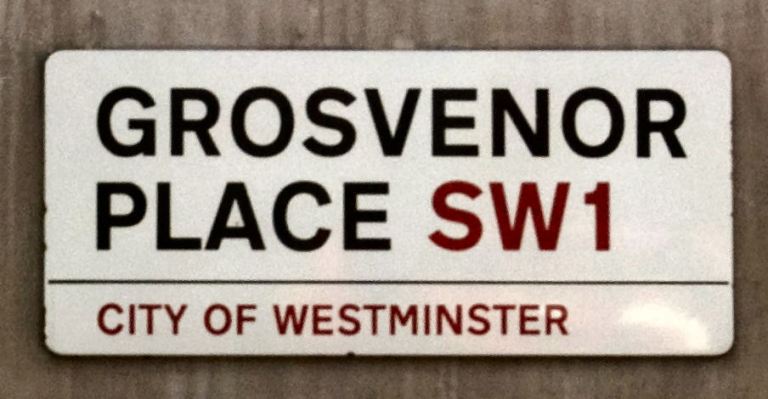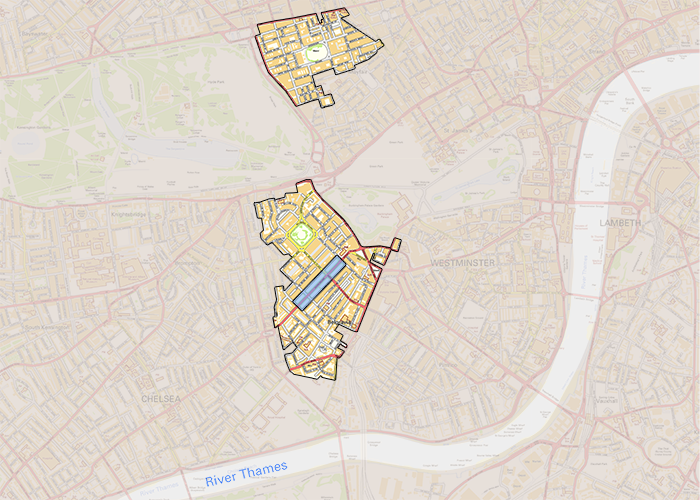This piece was published just after the death of Gerald, 6th Duke of Westminster. When his son Hugh succeeded to the titles and inherited the family business he became the richest person under thirty in the world.
From Who Owns England.org, August 17, 2016:
It takes the death of an aristocrat to really bring out the forelock-tugging sycophant in the British media. “Because of Grosvenor’s wealth and prominence”, simpered Bryan Appleyard in the Sunday Times last weekend (£), bemoaning the sudden demise of Gerald Grosvenor, 6th Duke of Westminster, “his death feels like a requiem for the whole aristocracy and for the great political settlement… that stabilised Britain and laid the foundations of its brief greatness.”
Well, up to a point, Lord Copper. Asked for his advice on how young entrepreneurs should succeed, the late Gerald Grosvenor once replied: “Make sure they have an ancestor who was a very close friend of William the Conqueror.” It brings to mind the ominous words of Errol Childress, the villain in the first season of True Detective: “My family’s been here a long, long time.”
As an inspiration for aspiring, hard-working families in post-Brexit Britain, yearning to seize back control from the vested elites, the Grosvenor family is not… exactly the right role model. The new Earl of Westminster, 25-year-old Hugh Grosvenor, inherits from his father a fortune of some £9bn, having handily leapfrogged over his two elder sisters thanks to the arcane aristocratic tradition of male primogeniture. And the source of this stupendous wealth? Why, land and property, of course.
The Grosvenor Estate comprises some 140,000 acres of land across Scotland and England (or perhaps very slightly less: 133,000 acres according to this recent Daily Mail article). For the purposes of this post, I’ll be leaving aside their 94,817 acres of Scottish landholdings – Andy Wightman has covered these at Who Owns Scotland – and trying to map their English properties.
1) London: Mayfair and Belgravia (300 acres)

Source: Wikimedia Commons
The bulk of the Grosvenors’ vast fortune comes from the luck of being granted some marshy acres on the north bank of the Thames in the 17th century, which went on to become prime real estate in the world’s most overheated property market. Today, the family rakes in vast rents from owning 100 acres of Mayfair and 200 acres of Belgravia. This land is actually pretty well mapped: a recent article in The London Magazine has this map purporting to show the Grosvenor Estate holdings, tucked just behind and to the north of Buckingham Palace:

Still, it’s an interesting question exactly how many of these mansions, offices and retail outlets have now been sold off to other owners. Private Eye’s excellent map of properties owned and leased by offshore firms, for example, shows a fair few owning freeholds in Belgravia and Mayfair.
2) Cheshire: Grosvenor Farms / Eaton Estate (5,500 acres)
Far more tricky to get a handle on is the Grosvenors’ rural estates. This is where being a close friend of William the Conqueror really comes in handy – an aristocratic knack at keeping one’s lands away from the prying eyes of the envious peasants for the past thousand years. After all, there has been only one Domesday survey.*
To their credit, the website for Grosvenor Farms in Cheshire does at least tell us the size of their landholdings: “Grosvenor Farms is a mixed farm extending to 2,245 hectares (5,500 acres) on the Eaton Estate near Chester.” But mapping this is altogether harder.
One clue is by looking at farm subsidy payments. Grosvenor Farms Ltd claimed £637,709 in Common Agricultural Policy (CAP) farm payments in 2015, of which £39,182 was for agri-environment schemes. In 2014 Grosvenor Farms claimed even more – £913,516, with £106,075 of this for agri-environment schemes....
....MUCH MORE
If interested see also:Who Owns England? "A guide to Modern Domesdays"